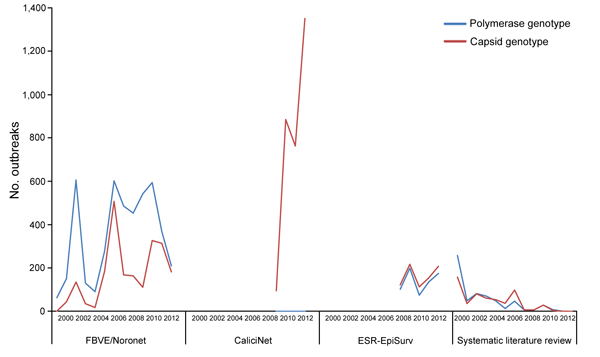Volume 21, Number 4—April 2015
Research
Norovirus Genotype Profiles Associated with Foodborne Transmission, 1999–2012
Figure 1

Figure 1. Norovirus data for which the genotyped region and transmission mode were reported in different surveillance systems (FBVE/Noronet, 5,583 outbreaks in 22 countries (1999–2012); CaliciNet, 3,094 outbreaks in 1 country (2009–2012); ESR-EpiSurv, 818 outbreaks in 1 country (2008–2012); and systematic literature review, 808 outbreaks in 61 countries (1993–2011). ESR, Institute of Environmental Science and Research; FBVE, Foodborne Viruses in Europe.
1These authors contributed equally to this article.
Page created: March 11, 2015
Page updated: March 11, 2015
Page reviewed: March 11, 2015
The conclusions, findings, and opinions expressed by authors contributing to this journal do not necessarily reflect the official position of the U.S. Department of Health and Human Services, the Public Health Service, the Centers for Disease Control and Prevention, or the authors' affiliated institutions. Use of trade names is for identification only and does not imply endorsement by any of the groups named above.